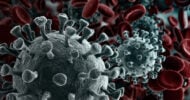With focus on the former president’s successful heart surgery, there is more interest than ever in screening for heart disease. Lots of business for hospitals:
“I’d imagine that the phones are ringing off the hook at every cardiology practice in the city,” said Dr. Peter Buttrick, cardiology chief at the University of Illinois Medical Center. “There certainly is more public awareness of heart disease this week than there was last week.”
. . . HeartCheck operates 10 centers nationwide, and appointments tripled at many of them this past week, said company president Bruce Friedman.
Doctors, too, seem to be behaving differently. At UMass Memorial Medical Center in central Massachusetts, five cardiac catheterization rooms stayed open extra hours to do angiograms — $5,000 tests that are the gold standard for checking arteries.
So, what to do? Should everyone be rushing out to have a stress test? The evidence says no:
The U.S. Preventive Services Task Force (USPSTF) recommends against routine screening with resting electrocardiography (ECG), exercise treadmill test (ETT), or electron-beam computerized tomography (EBCT) scanning for coronary calcium for either the presence of severe coronary artery stenosis (CAS) or the prediction of coronary heart disease (CHD) events in adults at low risk for CHD events.
Rating: D recommendation.
There is no evidence that mass screening low-risk, asymptommatic adults improves health outcomes. False-positive tests leads to unnecessary invasive procedures and over-treatment, and it was concluded that these potential harms outweighs the benefits.
Of course, screening stress testing is warranted in some cases (i.e. in men over age 45 who have diabetes or other risk factors who wish to start an exercise program). UptoDate suggests the best test in these cases is still the exercise ECG:
When the decision is made to screen, no single test is ideal. However, it seems reasonable to conclude, based upon the available data, easy accessibility, and cost considerations, that initial screening with exercise ECG testing is the most prudent approach . . .
And what of the “heart scan” (electron-beam computerized tomography – EBCT)? Zero role in screening low-risk populations, due to an unacceptable false-positive rate:
. . . the ACC/AHA published an Expert Consensus Document in 2000 that concluded that EBCT cannot be recommended for the diagnosis of obstructive CHD because of its low specificity, with a resulting high false positive rate when the test is applied to low risk populations . . .
So, what can asymptomatic patients do to best “screen” for heart disease?
1) Screen for hypertension at least every two years.
2) Screen for high cholesterol at least every five years.
3) Quit smoking.
4) Calculate your Framingham risk score periodically to see if you are at increased risk for a heart attack.
So, why was Clinton’s heart disease (almost) missed? Genetics certainly could have played a role. Smoking cigars, defying your doctors, and not taking a statin with an LDL of 177, also could have made the difference.







![Working patients and health care [PODCAST]](https://www.kevinmd.com/wp-content/uploads/Working-patients-and-health-care-190x100.jpg)

![Supporting medical resident families [PODCAST]](https://www.kevinmd.com/wp-content/uploads/Supporting-medical-resident-families-190x100.jpg)


![A tribute to primary care [PODCAST]](https://www.kevinmd.com/wp-content/uploads/A-tribute-to-primary-care-190x100.jpg)
![Biotechnology and biological warfare [PODCAST]](https://www.kevinmd.com/wp-content/uploads/Biotechnology-and-biological-warfare-190x100.jpg)
